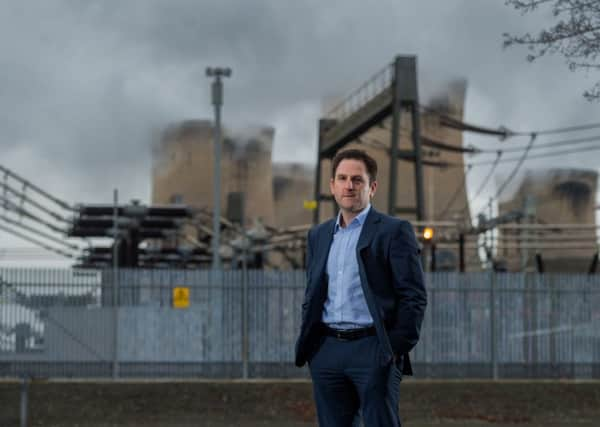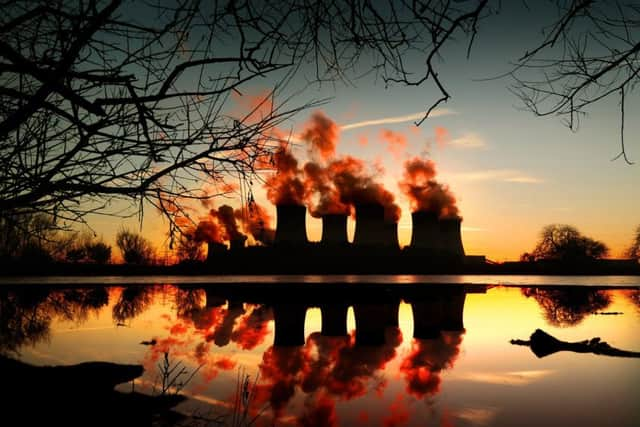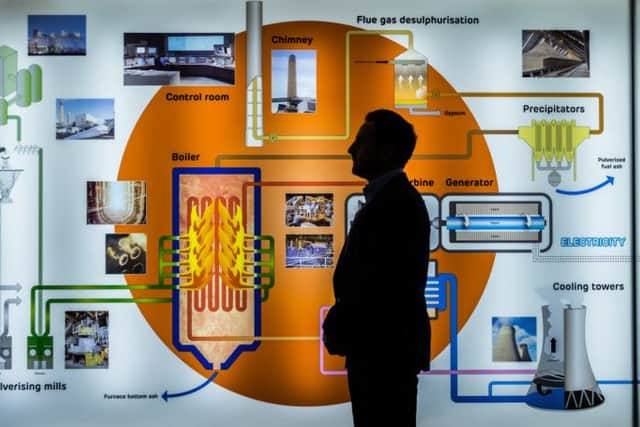Why is government stalling on green revolution at Drax?


But in 2012 it received confirmation of Government support to start moving over to biomass fuel and since then has converted three of its six units.
They are fuelled by woodchip pellets, which are a by-product of the forestry industry; replanting keeps carbon levels near constant, making the fuel effectively carbon-neutral.
Advertisement
Hide AdAdvertisement
Hide AdThe pellets are shipped in, 80 per cent from the United States, 15 per cent from the rest of Europe, arriving at Hull, Immingham, the Tyne and Liverpool, before being freighted to Drax by trains that never fully stop as they release their cargo through grilles beneath the tracks.


It’s a slick operation, and the move has been widely acknowledged as a resounding success, resulting in carbon savings of more than 80 per cent, or 20 million tonnes, compared with coal. Drax now supplies around eight per cent of all the energy used in the UK – enough for six million homes – and half of that is renewable.
The power station has invested almost £700m in the conversion, building new, state-of-the-art biomass facilities, including four dome-shaped woodchip pellet silos, each big enough to accommodate the Royal Albert Hall.
New supply chains have also been created, and around half the investment has gone into building pellet plants in Mississippi and Louisiana.
Advertisement
Hide AdAdvertisement
Hide AdDrax Power chief executive Andy Koss is in no doubt as to the importance of biomass to the country’s energy profile. “It has a very valuable role to play. I don’t think it will ever be on the same scale here as maybe wind or solar is going to get to, certainly not through converting old plant,” he says.


“But it has a very valuable role to play because this is a despatchable, controllable renewable. With wind and solar, if the wind’s not blowing or the sun’s not shining there’s not much you can do. Whereas we’re very flexible and we can respond to what the National Grid needs at various times – maybe when the wind’s not blowing or the sun’s not shining. So maybe a smaller component than some renewables, but a very important one.”
But the more successful the plant becomes, the more compelling the argument to convert the other three power generation units. The three burning biomass generate 70 per cent of the plant’s output; completing the conversion could boost total output considerably, as well as further reducing Drax’s – and the country’s – carbon footprint.
“We would very much like to convert the other three and we’re working on the technological upgrades and more innovation to be able to do that as cost-effectively as possible,” says Koss.
Advertisement
Hide AdAdvertisement
Hide Ad“One of the big challenges we face is on the supply chain. Port infrastructure, the rail network as well – making sure there are enough rail paths and rail wagons to bring the material into site here.


“We’ve got about 12 million tonnes of throughput capacity and we work very closely with Network Rail, with GB Railfreight and also with DB Cargo – the freight companies – to make sure we’ve got enough rail paths to bring them in.
“There’s plenty of raw material out there in the world. In the US alone, they have 100 million cubic metres of surplus material every year, so sourcing sustainable biomass we don’t believe is a problem. It’s probably the logistics that prove to be the constraint.”
Developing such infrastructure costs money – a commodity that never seems to be in surplus. Moreover, the result of last year’s EU referendum has made planning such expansion all the harder.
Advertisement
Hide AdAdvertisement
Hide Ad“Obviously, Brexit brings with it a lot of uncertainty – particularly in our industry,” says Koss.


“All businesses would say they like investment certainty, but in a large capital-intensive industry like ours, we need certainty over 10 to 15 years, and unfortunately we don’t have that at the moment.
“What we do have is that we are at the moment part of the internal energy market – the European energy market – which is all about freeing up barriers, being more interconnected, helping bring bills down, so the more we remove barriers, the cheaper the bills are at the end of the day for consumers.
“We’re very keen to remain part of the internal energy market, and be part of the EU emissions trading scheme for carbon. These are really important things, we believe, and we’ve fed that into Government.
Advertisement
Hide AdAdvertisement
Hide Ad“What we don’t know is where that will end up. Obviously, the May administration has been talking about not being part of the Customs Union, but it’s not clear to us at the moment what that means for the energy market. We’re a strong advocate for remaining part of Europe, at least in terms of the energy market.”
However Brexit goes – hard, soft, smooth or bumpy – the Government has been making all the right noises about biomass for some years now, so Koss is hopeful that Drax will be able to complete the conversion process before the expected end to coal generation in 2025.
“I think the Government have been very supportive,” he says. “They recognise this is a renewable technology, and they’ve been supportive in helping us through all the support schemes that we’ve needed in order to make this work, and very helpful in the negotiations with the European Commission. I think they believe that biomass is very much part of the mix.
“However, there are obvious challenges that the Government faces. We talk about the ‘trilemma’, which is about bringing carbon emissions down, making our bills affordable and also keeping the lights on, and we recognise that in terms of cost there’s a big challenge there.
Advertisement
Hide AdAdvertisement
Hide Ad“We would say with the May administration and the Cameron administration the focus has moved more towards security of supply and affordability for consumers – and we understand that – and key for us for the future is trying to drive down the cost of making pellet and the cost of making electricity from pellets.”
But if the third of the “trilemma” that Theresa May seems least interested in is carbon reduction, where does that leave Drax – the green pioneer?
“What all renewable energy projects need is some form of Government support and we continue to have that dialogue,” says Koss.
“We believe that we’re the cheapest renewable on the system and what we’re asking for is a level playing field. We’re not looking for any special favours; if we compete on a level playing field and we’re cheaper than offshore wind, that’s good for the country, good for us obviously, and good for consumers.”
Advertisement
Hide AdAdvertisement
Hide AdThere are clearly some very compelling arguments for biomass – in terms of fuel efficiency, sustainability and pollution control – and it seems the Government is willing to invest further in it, even if its ability to do so right now may be in doubt.
But whether – or how soon – Government money for further conversion is forthcoming, Drax appears destined to play a leading role in the power revolution for a long time to come.
“If you read what the National Grid say, the electricity system is becoming more unstable, and that’s because the old kit – the old coal plants and gas plants that provided a lot of services to National Grid, managing frequency on the system, managing voltage – is disappearing off the system,” says Koss.
“And therefore we believe Drax becomes a more strategic asset over time because we’re one of the only remaining plants that can fulfil a lot of the requirements that National Grid needs.
“So the need for us to stick around for a long time is very important and we think that Government and National Grid recognise that.”